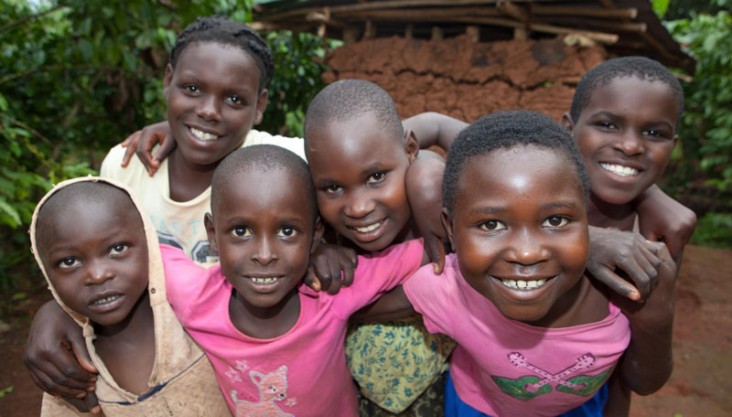- What We Do
- Agriculture and Food Security
- Democracy, Human Rights and Governance
- Economic Growth and Trade
- Education
- Ending Extreme Poverty
- Environment and Global Climate Change
- Gender Equality and Women's Empowerment
- Global Health
- Water and Sanitation
- Working in Crises and Conflict
- U.S. Global Development Lab

The U.S. Agency for International Development’s (USAID’s) orphans and vulnerable children (OVC) programs, through the U.S. President’s Emergency Plan for AIDS Relief (PEPFAR), aim to improve the health and well-being of children living with and affected by HIV. The OVC programs strengthen child and family resilience and contribute to the acceleration of access to HIV/AIDS treatment for children and to the prevention of HIV among adolescent girls and young women. By lessening the impact of HIV and AIDS on children and families, communities are better positioned to work toward an AIDS-free generation.
In Fiscal Year 2015, over 5.5 million orphans and vulnerable children and their families received care and support through PEPFAR-supported programs. OVC programs enable the delivery of vital health and social services that are critical to improving HIV prevention, care, and treatment, thus contributing directly to the UNAIDS 90-90-90 goals and ultimately working toward epidemic control. USAID supports child-centered, family-focused, community-based, and government-backed OVC programming that targets the full range of OVC needs according to the age and developmental stage of the child.
Where We Work
USAID has programs for orphans and vulnerable children in the following countries:
|
Botswana |
Kenya |
South Africa |
|
Burundi |
Lesotho |
South Sudan |
|
Cameroon |
Malawi |
Swaziland |
|
Cote d’Ivoire |
Mozambique |
Tanzania |
|
Democratic Republic of the Congo |
Namibia |
Uganda |
|
Ethiopia |
Nigeria |
Zambia |
|
Haiti |
Rwanda |
Zimbabwe |
|
India |
|
|
ACT and DREAMS Initiatives
OVC programs remain central to achieving an AIDS-free generation, contributing to the achievement of the goals of the Accelerating Children’s HIV/AIDS Treatment (ACT) Initiative [PDF, 209KB] and the DREAMS (Determined, Resilient, Empowered, AIDS-Free, Mentored, and Safe) Initiative.
Worldwide, more than 13.3 million children are living without one or both parents due to AIDS, a change from 14.3 million at the height of the epidemic. Due to the expansion of care and treatment programs, parents are successfully living with HIV. However, USAID continues to refine the services for orphans and vulnerable children in high-prevalence communities to respond to socio-economic challenges that negatively impact the lives of children.
OVC programs conduct strategic efforts to strengthen the capacity of orphans and vulnerable children, their families, their communities, and their systems of care and support. These programs improve access to essential services, including core HIV treatment and prevention services, for children and their parents or caregivers. To achieve an AIDS-free generation, strengthening children’s resilience, especially among adolescent girls, their families and communities, is a core priority for ensuring that all children can survive, thrive, and reach their full potential.
Additional Resources
- WHO Launches INSPIRE: Seven strategies for Ending Violence Against Children Technical Package
- Learn more about the DREAMS Initiative
- Success Story: Post-Rape Care Helps Swaziland’s Youngest Survivors
- Success Story: Parenting in South Africa Amid the Threat of HIV







Comment
Make a general inquiry or suggest an improvement.